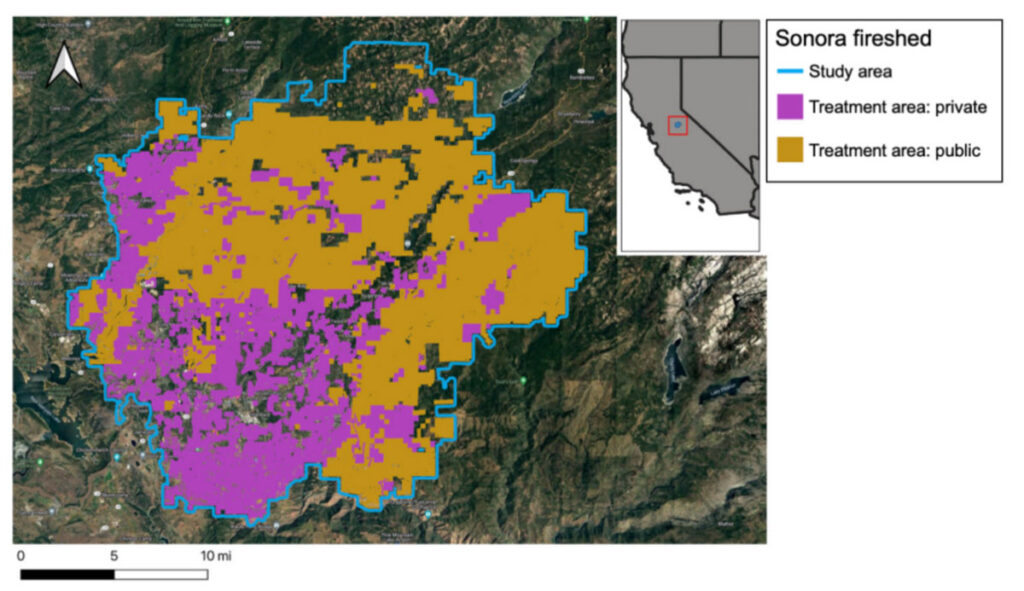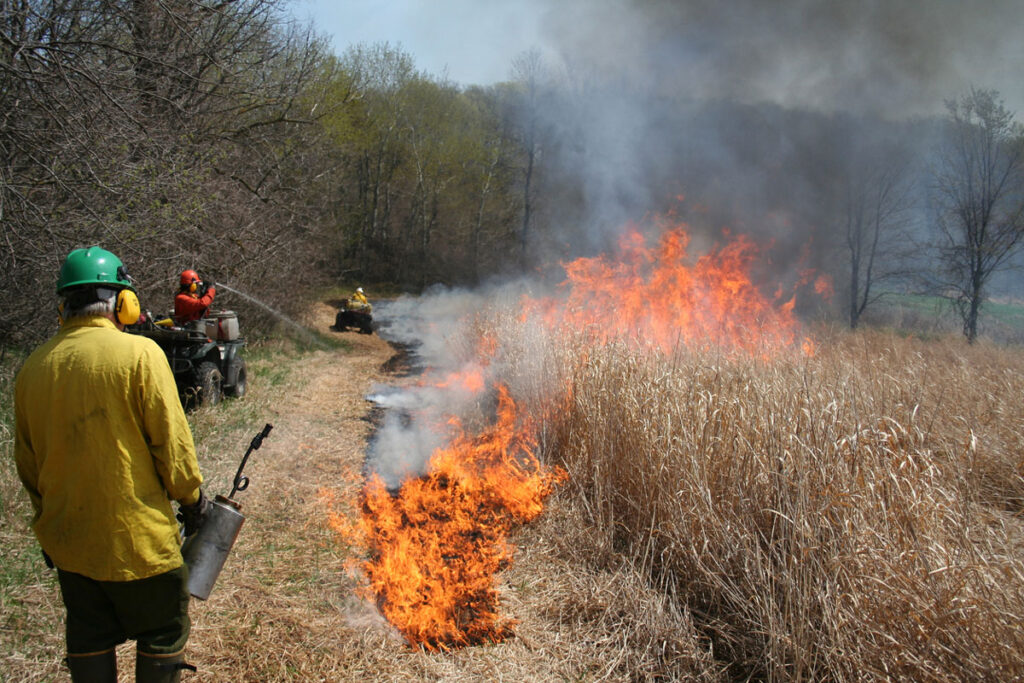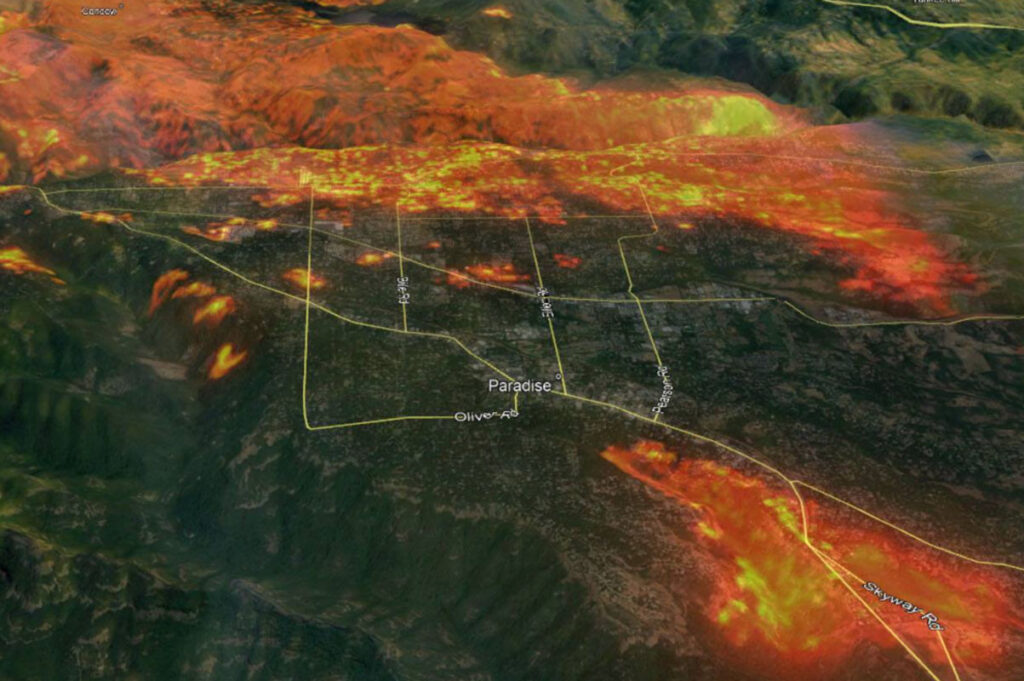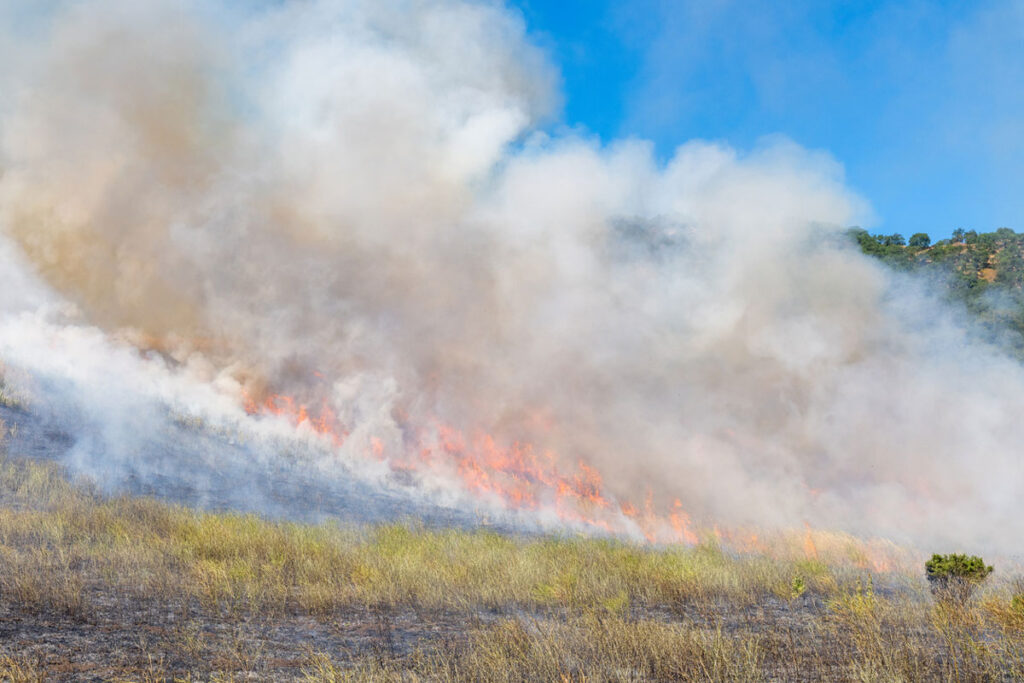Close
Close


In order to support a program aimed at reducing fire risk on private lands, American Forest Foundation was interested in evaluating the level of treatment needed to reduce fire risk if treatments could not be prioritized according to traditional methods. This reflects the goal of their program to fund the owners of smaller private parcels to do fuels reduction treatments, resulting in an extensive but non-contiguous matrix of treatment areas across the landscape.
Spatial Informatics Group developed a methodology to evaluate the effectiveness of wildfire risk reduction treatments across a range of scenarios of differing treatment intensity, size, and spatial distribution. The central objective was to determine what treatments would be required to achieve fire risk reduction goals in the absence of prioritization.
SIG’s scientists used the 425-square-mile Sonora fireshed in California’s central Sierra Nevada as a case study. Within the study area, we selected treatment areas based on ownership and vegetation types. We tested the effects of three variables on fire behavior: treatment intensity, treatment size, and land ownership type.
We developed a workflow in Google Earth Engine to model treatments over 52 scenarios leveraging data and models from the National Land Cover Database, USDA Forest Service weather data, LANDFIRE, Fire Family Plus, and GridFire.

